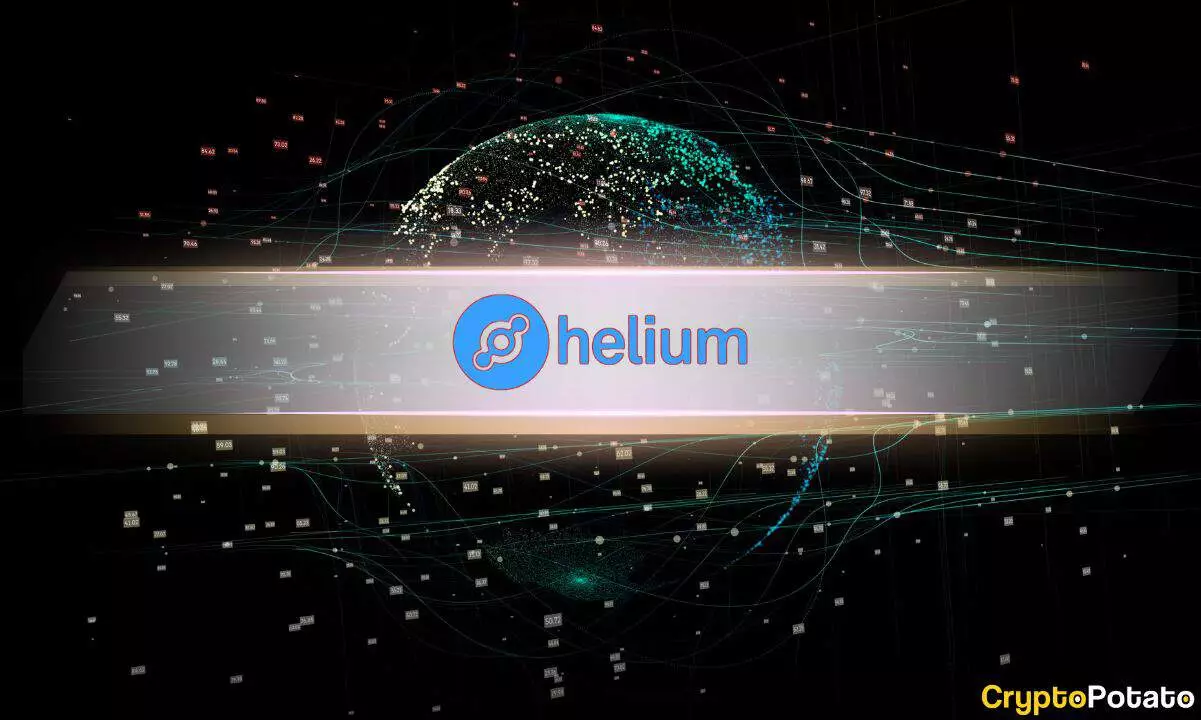The Helium network, innovative and ambitious in its quest to redefine telecommunication infrastructure through user-generated hotspots, is facing a troubling conundrum. In the fourth quarter, its native token, HNT, suffered a staggering 20% drop in circulating market capitalization, plummeting to a mere $1 billion. This deceptive shine of potential in decentralized technology now dims as investors witness a 22% crash in HNT’s price, falling from $7.54 to $5.88. Those who once believed in Helium’s promise may now find themselves reconsidering their investment strategies. While the network continues to expand, the stark reality is that falling token values can create a chilling effect on enthusiasm and engagement.
Hotspot Growth vs. User Engagement: A Hollow Victory
It’s undeniable that Helium’s network is growing, with the number of hotspots rapidly increasing by 14% quarter over quarter. Reaching 24,800 hotspots, this expansion paints a picture of progress, yet one must ponder: is sheer growth enough? The real question remains around user engagement. Helium Mobile’s services are marketed as cheaper alternatives to traditional telecom giants, positioning them as an appealing option. However, when reality indicates that daily Data Credits utilization sits in the few hundred dollars—insipid for a network purportedly thriving—what does this say about actual demand?
In the tech industry, user engagement is the lifeblood; mere numbers on a chart do little to sustain long-term viability. The introduction of Discovery Mapping seemed promising, rewarding users for sharing location data. Yet, the abrupt shift to Cloud Points could dilute incentives further, potentially stifling vital user interaction.
The Inevitability of Infrastructure Versus Demand
With 33,000 hotspots on-boarded post-migration to Solana, Helium has evidently established a solid infrastructure foundation. However, the paradox lies therein—a booming supply juxtaposed against a demand that simply doesn’t reciprocate. Fundamental economic principles dictate that excess supply in a market without adequate demand inevitably leads to stagnation, if not decline. The deployment of LoRaWAN connectivity represents a critical stride toward widespread adoption; still, the lackluster data transfer usage indicates the promise has yet to translate into actionable consumer interest.
Helium’s struggle reminds one of an essential lesson in entrepreneurship—solving a problem is crucial, but if the marketplace isn’t articulating that need, it becomes a case of a solution without a problem. The looming question remains: when will Helium convert this elaborate infrastructure into tangible network demand?
The Troubling Shadows of Governance and Transparency
Moreover, troubling reports surrounding the founders and early investors potentially hoarding HNT tokens cast a long shadow over Helium’s narrative. Allegations of insiders mining millions of tokens while the public scrambles for a fraction of the rewards contribute to a problematic image that questions the ethos of decentralization. If a project championing democratized networks enables practices contradictory to that very principle, its credibility is seriously undermined.
This sentiment is only exacerbated by past claims of strategic partnerships with companies like Lime and Salesforce. Such bombastic statements, later refuted, could easily tarnish the reputation of any emerging technology company. When transparency becomes an exception rather than a rule, potential users and investors find themselves grappling with distrust.
The Present Reality: Perils of Market Entry
As Helium navigates these turbulent waters, it serves as a cautionary tale to investors and innovators alike. The cryptocurrency space is notorious for its volatility; however, the intersection of technological promise and market realities tests the very core of optimism among believers of decentralized solutions. Helium’s ambitious plans illustrate the power of grassroots initiatives in tech, yet the operational realities reveal the perils associated with chasing growth without sustainable user engagement.
Recognizing the boundaries of technology in a consumption-driven marketplace is vital, but the path to identifying promise amidst pitfalls requires vigilance. As the market watches closely, Helium’s ability to align its impressive infrastructure achievements with user demand could prove pivotal in determining its future success—or failure.

